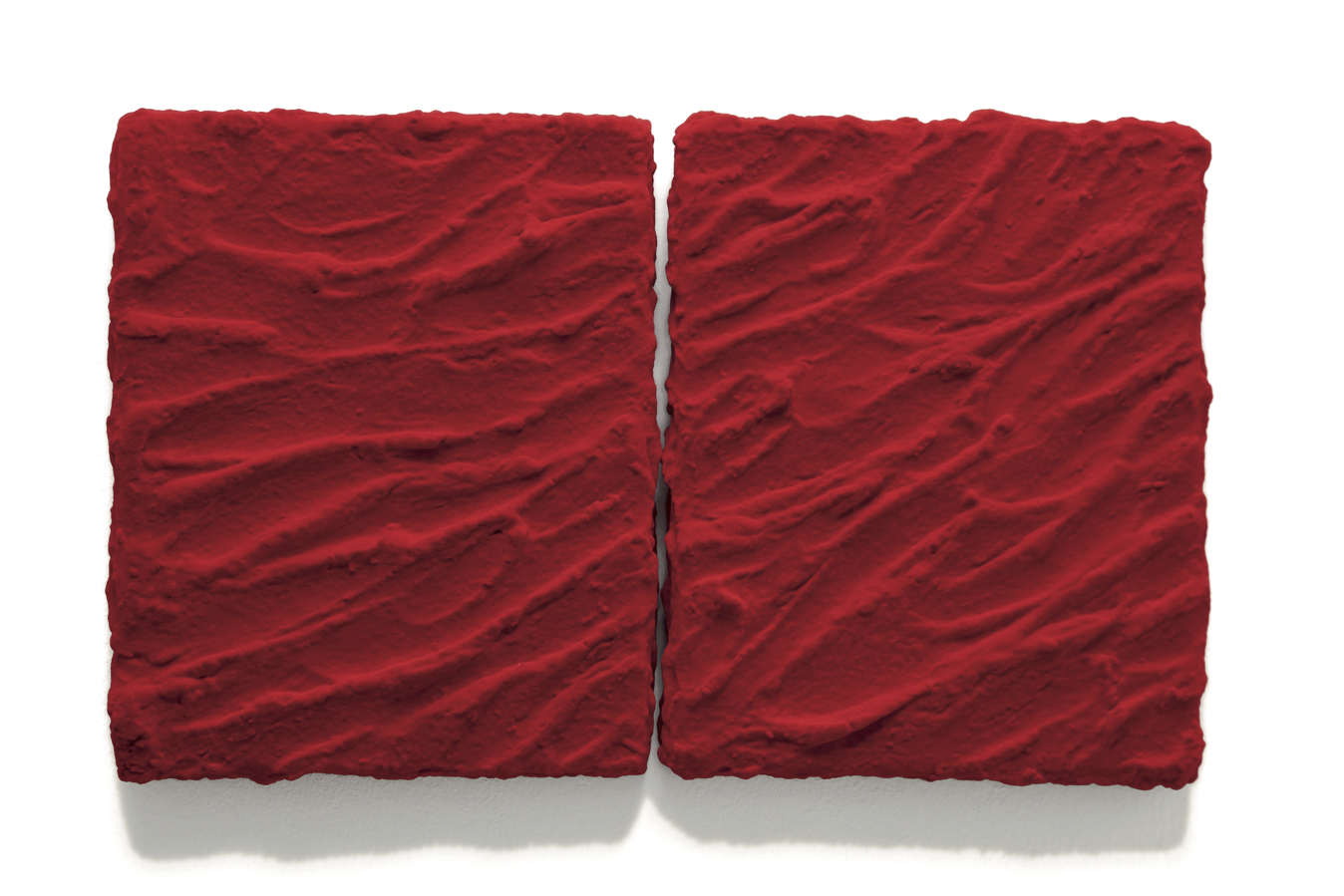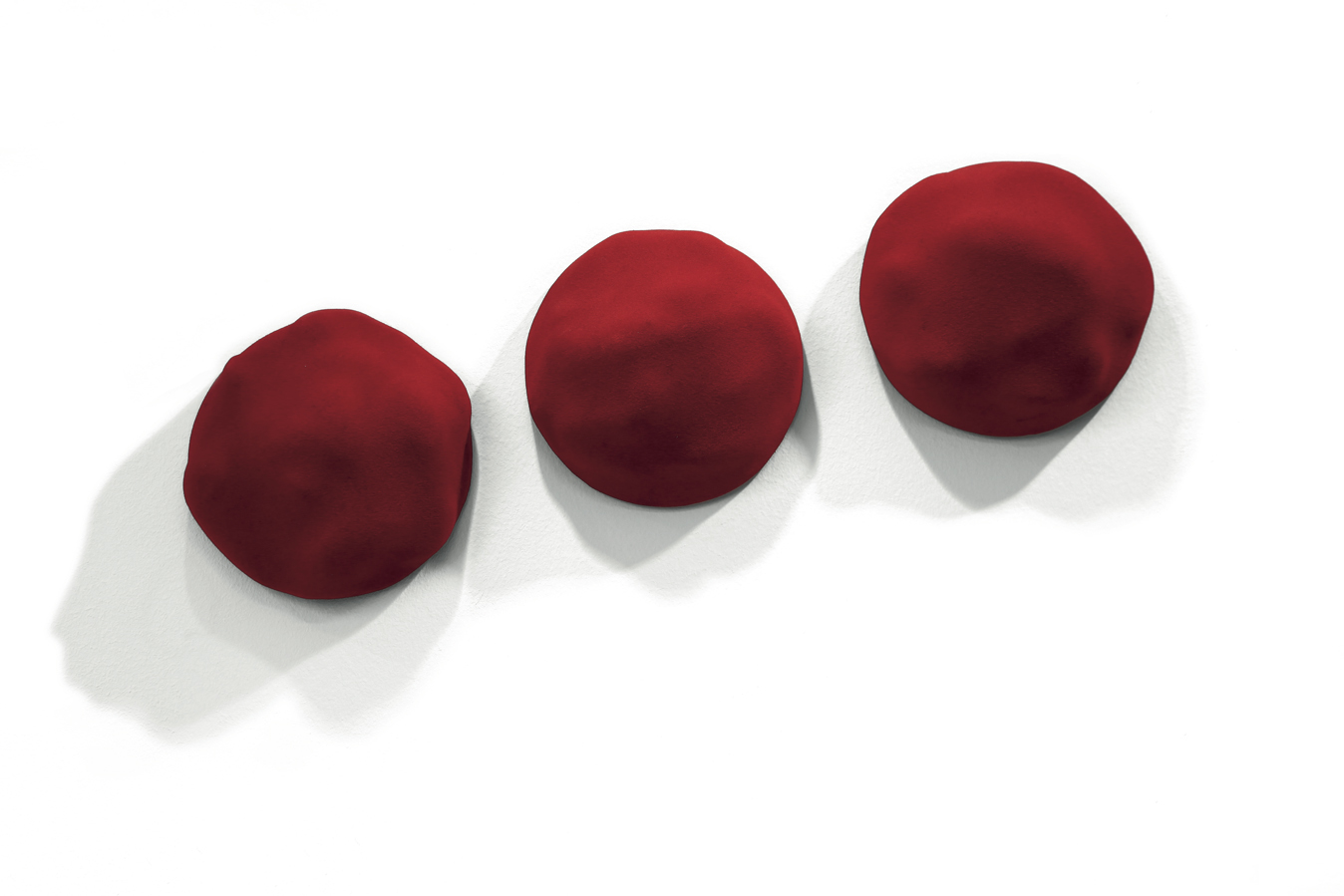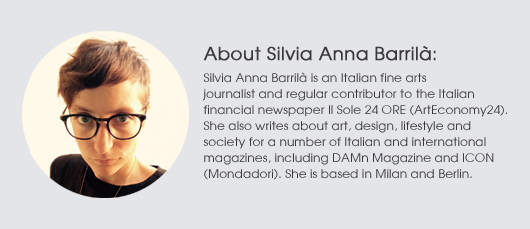
MILAN, Italy – Born in Catania in 1938, Pino Pinelli moved to Milan in the 1960s, attracted by the great artistic and cultural ferment that developed around fundamental figures of Italian postwar art such as Lucio Fontana, Piero Manzoni and Enrico Castellani. Spurred by their example, Pinelli experiments with new solutions for the surface of paintings. He investigates their geometry, shape and color, and becomes a member of the Analytical Painting, a movement of the 1970s that analyzes the material components of the painting and the relationship between the painting and the artist.
Already in the early 1970s Pinelli arrives, through a process of subtraction, to the monochrome painting. Since 1973 he titles his works simply “Painting,” followed by the first letter of their color (R for red). In 1976, the classic concept of framework breaks and the wall becomes part of the work. So he creates the “Disseminations,” where pieces of the work are spread on the wall. In the same years, Pinelli stops using the classic canvas and uses materials such as flannel that gives the work a tactile component.
So art critic Alberto Zanchetta writes in regard to this process: “In the second half of the 20th century painters had given up to the framework of the picture which was perceived as a constraint and an artifice. They were interested in probing the walls of museums or art galleries, allowing the works to enter into direct relationship with the exhibition environment: ‘a place of events’ that becomes the new spatial boundary of painting. In the 1970s, artists such as Pino Pinelli realize even the limit imposed by the frame of the painting itself. Therefore they reply with a deflagration that gives body to painting, making it matter (even more than material). Pinelli, for example, feels the need to re-establish the nature of painting itself and its assumptions, by suggesting future developments and all the possible ramifications. Even today, his painting is conceived in relation to the exhibition space, ‘designed’ to live together and in harmony with the architecture.”
Until the 1980s, Pinelli combines shapes and colors on linear trajectories. From 1987, he starts using irregular shapes, almost fragments of matter, which combines two by two. In the 1990s, however, he goes back to more regular shapes and compositions. In 1995 the cross appears the first time, first only in red and later, from 1999, also in blue: a symbol that in recent years the artist has exhibited widely.
Pino Pinelli, Pittura R incroci, 2009, 41×41 cm, acrylics on canvas, seven elements. Courtesy Dep Art Gallery Milano

His first exhibition took place in 1968 at Galleria Bergamini in Milan. Over the years he took part in several group exhibitions not only in Italy – we remember his participation in the Venice Biennale in 1986 – but also abroad, for example in France at Galerie Lil’Orsay and Galerie Chantal Crousel-Svennung in Paris, and in Germany at Galerie Neuendorf in Frankfurt.
From a year now Pinelli is represented exclusively by Dep Art Gallery of Milan and Claudio Poleschi of Lucca. “The market of Pino Pinelli has been rooted in Italy for many years now,” Antonio Addamiano from Dep Art Gallery says. “But in the last 12 months, since he has been working with us and with Poleschi, there has been a growing interest also from collectors from other European countries. In fact, his works have reappeared at fairs like Artissima, PAN-TEFAF in Amsterdam, Geneva Art and Art Paris, and new collaborations have been established with foreign galleries that have already presented solo and group shows, such as MDZ Knokke and De Buck in New York.”
Despite this, Pinelli’s work is still underestimated at the international level. His small works range from 7,000 euros to 12,000 euros, while the installations of six, 18 and 32 elements reach up to 60,000 euros. The works from the 1970s range from 20,000 euros to 50,000 euros.
“His language is unique and highly identifiable” Antonio Addamiano says. “Its importance in the history of art comes from being one of the founders of the Analytical Painting in the early 1970s and of artistic processes such as the dissemination and the rupture of the square. Works of this importance should cost from 50,000 euros up.”
Among the most requested works are the monochromes of 1974-75, which are loved in particular by a more traditional clientele, while lovers of contemporary prefer the broken square and the “Disseminations.”
Pino Pinelli, Pittura R, 1974, 70×70 cm, acrylics on canvas. Courtesy Dep Art Gallery Milano

“Now there are more and more requests from Switzerland, France, Holland, Germany and the countries where his work has been exhibited,” Antonio Addamiano says. “In America, one cannot penetrate the market without a major retrospective, the public needs to know in depth all the work by Pinelli and until now there was no chance.”= Until May 30, Milan-based gallery Dep Art is dedicating a retrospective to Pino Pinelli with works from the 1970s to today.
“The exhibition encompasses all Pinelli’s creative periods” Antonio Addamiano says, “from the famous monochromes to the latest disseminations. All works have in common the color red which has always been one of the most used and famous primary colors by the artist – so much so that we speak of ‘Pinelli Red.’ “
Pino Pinelli, Pittura 86, 1986, 21x21x13 cm, acrylics on canvas, three elements. Courtesy Dep Art Gallery Milano



